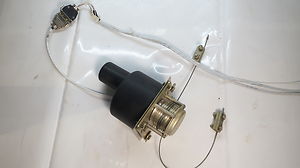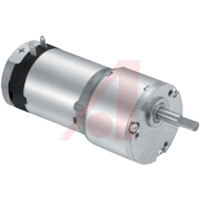Autopilot Roll Servo Startup Voltage: there is NO feedback (wire) from the servo to the A/P
Correct - I believe I said that after seeing the connections
He also would NOT replace the servo because of the 3 volts as long as the plane flies as precise as it does (he says that a new servo will be at 3 volts within a year again and that its a waste of money)
Yeah, the exact voltage at which the motor starts to move should not matter.
Out of trim: not possible because there would have been a "servo limit" message
I don't know about the message but the plane being out of trim cannot possibly affect the autopilot.
Bad A/P rack: If the rack is bad and has no good connection then it will not work for three months and be bad just for two flights ...
PROB99 true, but only 99 
I have updated the firmware of my bicycle twice in the last months.
I'm still pedaling on my old firmware. Any important changes?
we are selling Mercedes UNIMOGS ... the newest model has mor electronics than most planes :-)
This is why I have two 406, with ZERO electronics. Do you get cheap spare parts?
I don't know about the message but the plane being out of trim cannot possibly affect the autopilot.
Yes, I think in theory it could. If the plane was so much out of trim that the roll servo would reach its limit then it could switch off the autopilot.... but since I never got a "roll servo limit" message this is not the case
This is why I have two 406, with ZERO electronics. Do you get cheap spare parts?
Well, we have a lot of used spare parts. New parts we can order but the prices are they same everywhere. Just tell me what you need!
Yeah, the exact voltage at which the motor starts to move should not matter.
Peter, please explain: So why do they always say that max. should be 2 volts witha new motor. Does the startup voltage say something about the condition of the motor? WHAt does it say?
If the plane was so much out of trim that the roll servo would reach its limit then it could switch off the autopilot
I cannot see how that is possible.
If you apply any voltage to the AP roll servo (any voltage sufficient for it to move) and never even increase that voltage, the ailerons will move at some (slow) rate and eventually are going to hit the mechanical stops.
The servo output gear doesn't drive the aileron absolute angle. It drives the aileron's rate of change of angle. Especially on the Cirrus where apparently the DFC90 drives the aileron trim screw. So even the smallest continuous servo drive will eventually drive the ailerons to the stops. IOW, the aileron angle is an integral of the angular velocity of the roll servo.
If your plane is out of trim so much that it needs the ailerons right up against their stops, then you have, ahem, some more interesting issues  Like, perhaps, a 30 degree angle of attack on the vertical stabiliser. Or one flap hanging 10 degrees down. It's not possible.
Like, perhaps, a 30 degree angle of attack on the vertical stabiliser. Or one flap hanging 10 degrees down. It's not possible.
So why do they always say that max. should be 2 volts witha new motor. Does the startup voltage say something about the condition of the motor? WHAt does it say?
I think that is just a simple test to see if the servo is shagged.
These old STEC 1980s servos are no rocket science. Just a motor with a concentric gearbox on the end of it.
The servo looks like this

and the motor inside will be something like this

Based on my bench tests I would expect a "28V" motor (which doesn't mean a huge amount; e.g. the motors used in the KFC225 servos really have windings appropriate to about 48V) to start running at about 1.5-2V, depending on the condition of the brushes, how carefully it has been assembled, etc. Even a very slight misalignment of the bearings will push up the starting voltage to say 5V (and much more importantly double the current the motor is drawing). I've serviced and reassembled enough of these crappy little motors, for other applications... They are not the €400 Maxon or Faulhaber or Portescap jobs. They are crappy low-end US motors which were chosen decades ago, certified, and nobody dares to change them.
The current is as important as the starting voltage; a motor which has been overheated and has some shorted turns (because the varnish on the windings has almost melted) will still start but will draw 2x or 3x more current.
In any servo system, as the error between the setpoint and the feedback increases, the voltage applied to the motor will increase, until the motor starts running, and causes the feedback value to reduce. So the exact motor start voltage is not important. If the control loop contains an integral term (it implicitly does, the way the servo linkage works on every autopilot, but the DFC90 prob99 has an extra one internally, otherwise it would need lots of proportional gain to fly the plane accurately wings-level, and lots of gain = stability issues) then even the smallest error will ramp up until the motor starts running.
However it is possible that the DFC90 has some software limit on the voltage applied to the motor and if it senses that more than say 4V needs to be used to get it to move, it flags an error / gives up / whatever. That would be a reasonable thing to do, to avoid getting into a situation where you are driving an increasingly shagged motor and not knowing until it goes totally.
The MM for the servo should specify the voltage at which the motor should start.
Other than the above, the 2V requirement is probably just a misunderstanding which has propagated. It's nothing to do with aircraft trim, the crosswind, etc.
The complete Cirrus Roll servo unit looks a little bit different, that's hwy they call it "roll trim cartridge". But i guess the motor itself is very much the same. At Cirrus an d Avidyne they say that the startup voltage should not be above 2.5 V maximum.
Ia lso learned that when i finally replace it (maybe next year) then I will get a newer brushless version. That sounds good, to me at least :-)
Thank you for the extensive explanation.
I think that several of the mechanics and other people who told me things actually mixed up some things.
I think: - if the autopilot is "wandering" it might have to do to do with the startup voltage - my symptom that the A/P simply disconnected in cruise cannot have to do with the servo
We will see if it happens again when i get the new autopilot computer.
I think: - if the autopilot is "wandering" it might have to do to do with the startup voltage - my symptom that the A/P simply disconnected in cruise cannot have to do with the servo
It is reasonable for the AP software to disconnect if it senses that a motor voltage above (say) 5V is not resulting in any aileron movement (as evident in the lack of any roll error correction - the AP has no aileron position feedback).
My guess is that the motor is a "28V" motor but obviously it would be daft to stick say 20V on it and just sit there - in the absence of any motor current measurement - because the motor could be seized totally, and then it will be dissipating ~ 20W (the Globe motors in the King servos have a stall current of 1A at 20V or so) which will melt it in some tens of seconds...
This is a very basic problem which the late King servos shift to another department (they have internal tachos and feedback, etc) but there is no really obviously good solution for it... in their case the servo eventually goes up in smoke (literally) and hopefully trips the servo supply CB. Then you find out...
Next week all three servos (roll trim. pitch trim and pitch servo) will be taken out and cleaned of all carbon dust. Avionik strauning now thinks that this might be the reason for the disconnects that happen every now and then. They have another SR22 in the shop at the moment and say that the servos were full of dust after 1100 hours. Mine has 940 hours now, so might be similar.
If the roll servo is bad I will replace it with the newer brushless version.
Yesterday I visited Avionik Straubing. The guys measured all three servos and all three showed a too high start-up voltage and they also drew too many Amps. They took out the pitch trim motor and cleaned it from (a little, not much) carbon dust. In January the roll trim servo and the picth servo will follow, and maybe we’ll replace the 950 hours old roll trim servo with the new brushless version.
Avidyne also gave me a new A/P computer, just in case that something was wrong with the computer. On the flight back everything worked, no disconnect. Stil does not mean much because with the “old” (3 months) AP it only happened every 4 weeks …